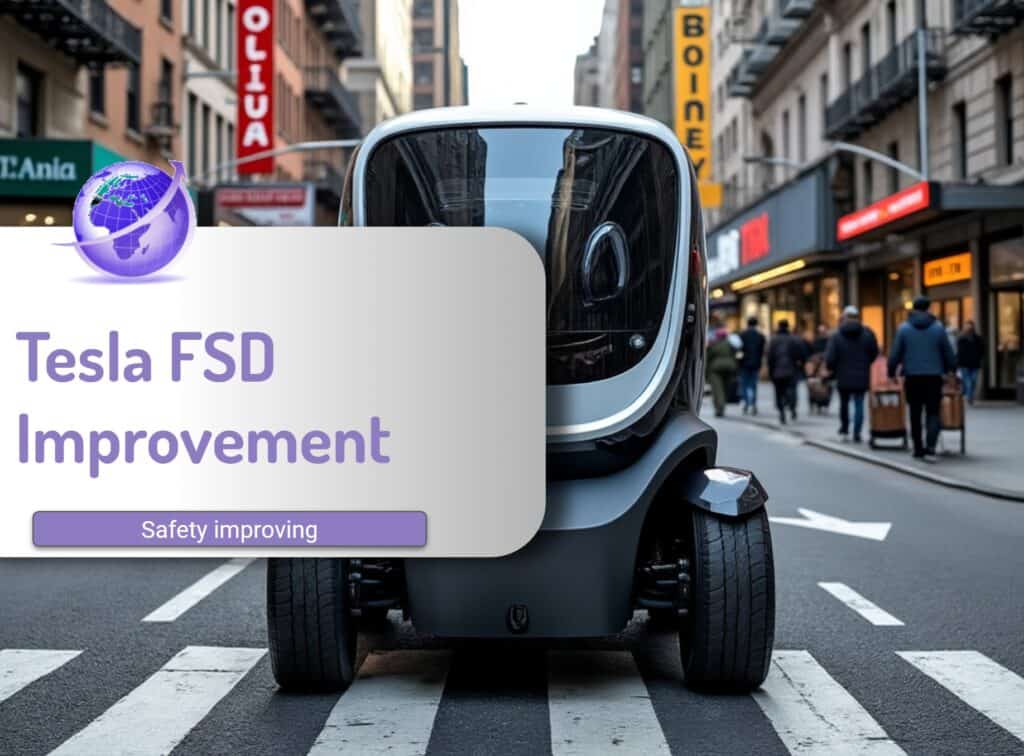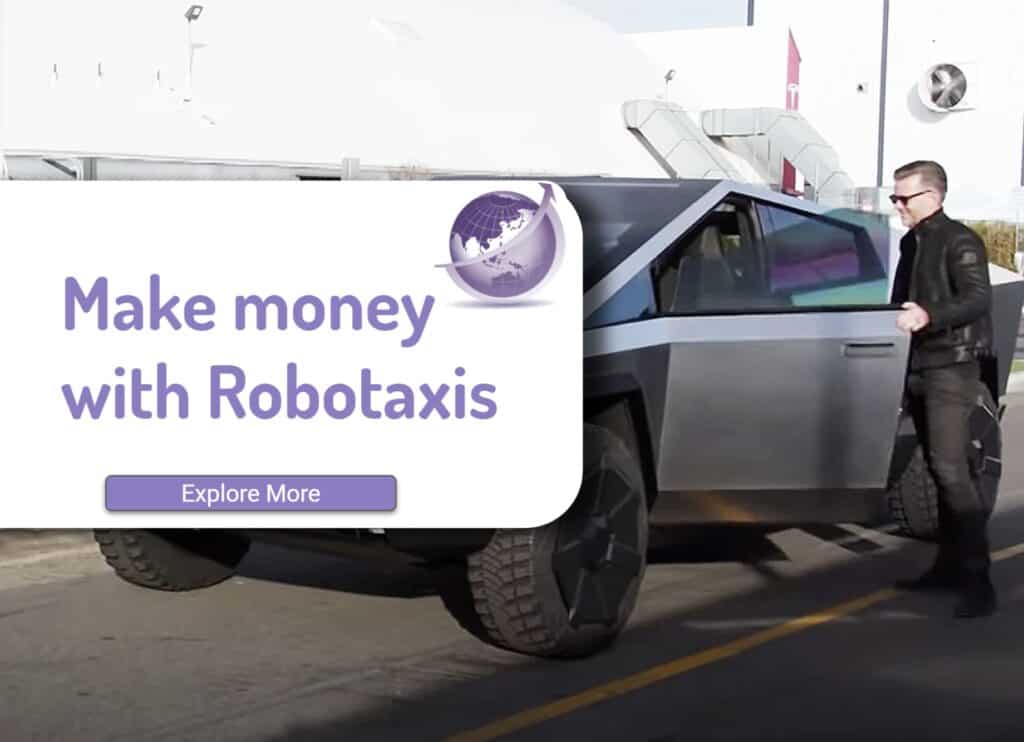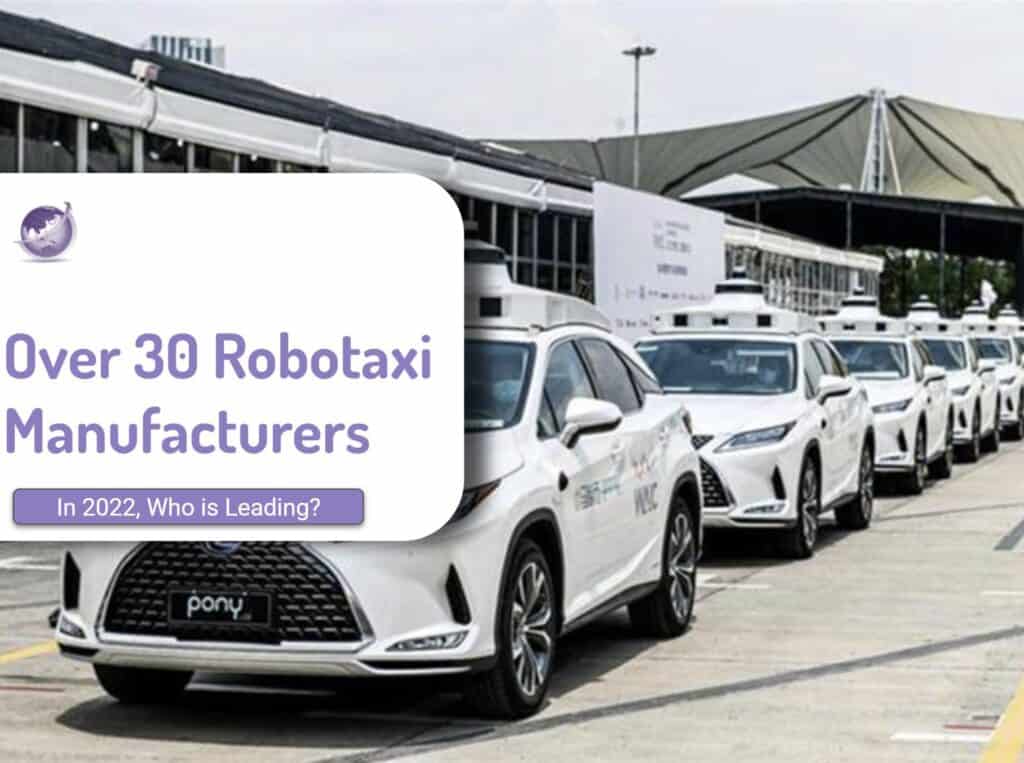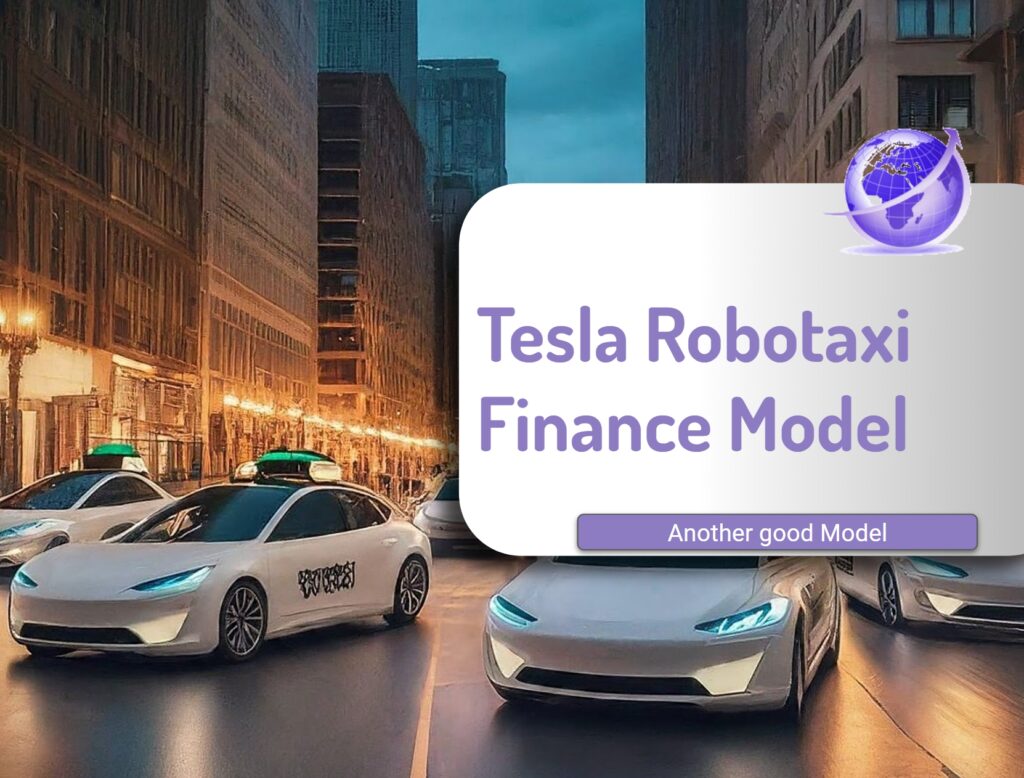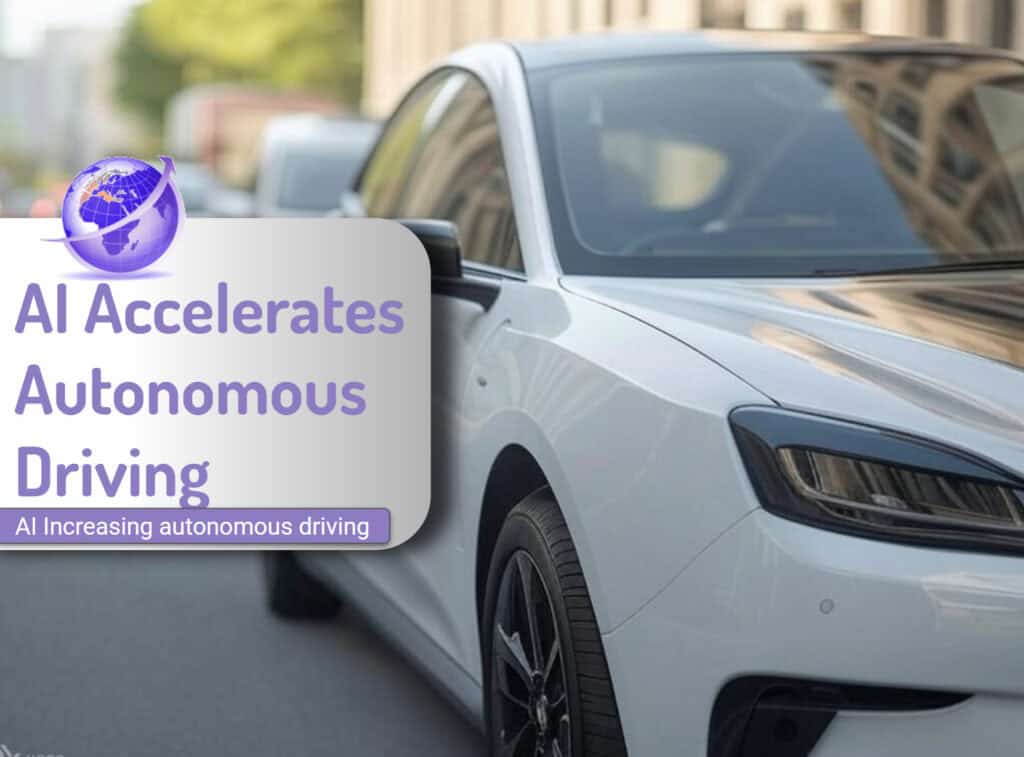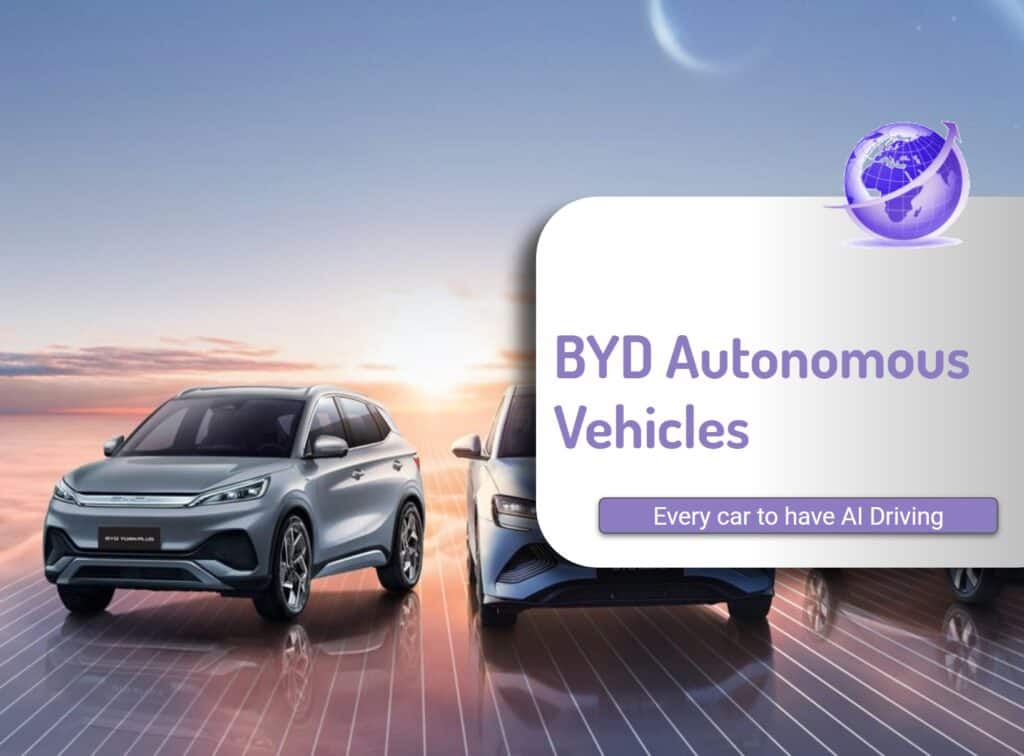Tesla FSD improvement for disengagement ratio is stunning—it’s proof that scaling laws apply to self-driving and real-world AI. The progress in October 2024 shows how far it has come over the past three years. It also shows how much more it needs to go. For a full breakdown on autonomous driving see the previous post on Robotaxis and they save lives.
- Tesla’s ADAS reduces accidents. If you have a Tesla you should use the ADAS.
- If you don’t have one you should consider getting one, and use the ADAS.
- Every single thing about auto accidents is terrible
- We now have the technology to reduce accidents dramatically.
- It’s saving lives without people knowing it has.
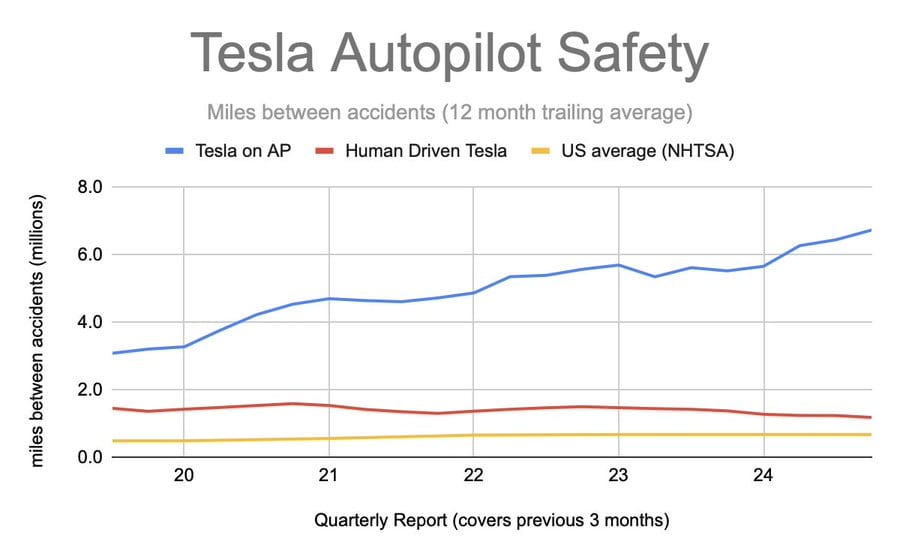
Rate of Improvement from Earnings Call
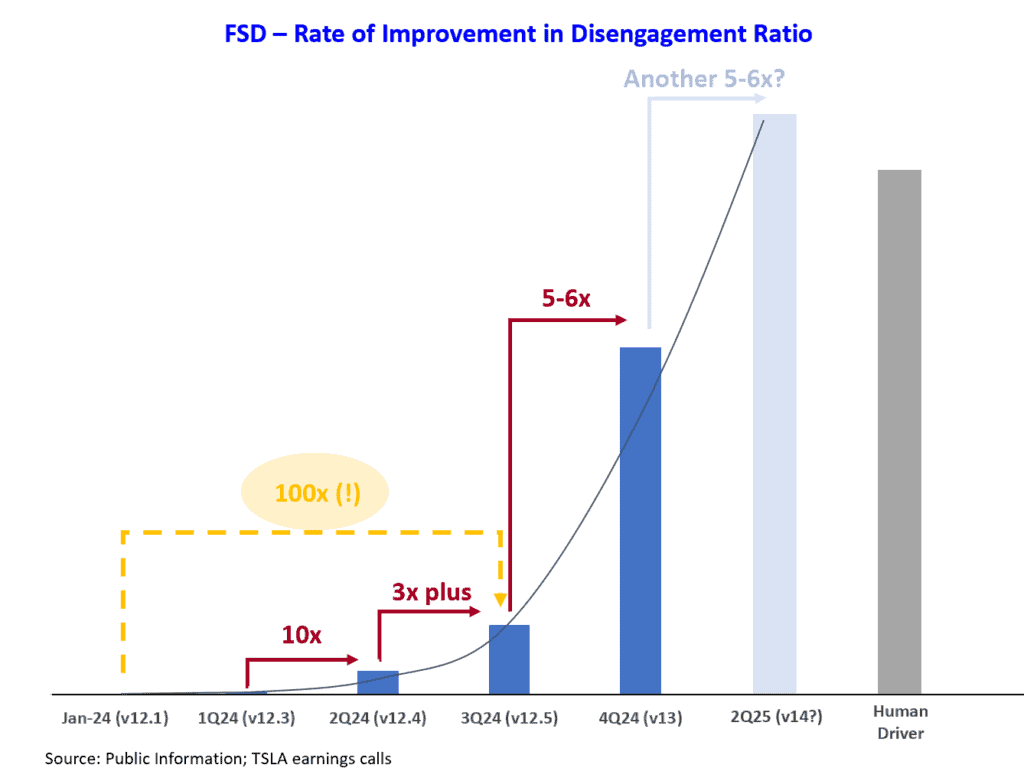
Tesla FSD Improvement
In the earnings call in 2024, Tesla reported the following. These numbers are for an official earnings call, and would be subject to punitive legal action if proven false.
- v13: 5-6x improved Miles per Critical Intervention (“mpci”) (Source: Tesla 3Q Earnings Call)
- v12.5: 3x improved mpci (Source: https://x.com/Tesla_AI/status/1831565197108023493…)
- v12.4: 5-10x improvement over v12.3 (Source: https://x.com/elonmusk/status/1790627471844622435…)
- Compared to Jan 2024 (v12.1): v12.5 shows 100x improvement; v13 will show a 1,000x improvement (Source: Tesla 3Q Earnings Call)
- By 2Q25, expect FSD to be safer than a human driver (Source: Tesla 3Q Earnings Call)
Comparison 1 – Human Driver:
Miles per reported accident = 550k (Total miles driven in the U.S. per year = 3.3 trillion; Total reported accidents in the U.S. annually = 6 million)
This means around 60k miles per minor incident, which is comparable to the average American driving 13.5k miles/year and having an accident every 3 years.
Comparison 2 – Waymo:
Waymo’s miles per disengagement = 17k (Source: California DMV, 2023). No data is available for 2024. It may be higher.
If the projections are correct, FSD would be ~100k mpci by 2Q25. This means v13 is above 10k (20k?) mpci, and v12.5 ~5k. In Jan 2024 (v12.1), this was likely just ~50 miles per disengagement. driver’s.
It can be expected scaling to continue with
- More data
- Better inferencing hardware such as the announced Hardware AI5 next summer
- More training capacity over time.
Q&A
It’s about cost + adoption. Autonomous driving is a futuristic concept that requires a ton of public education. A sleek, futuristic car with *no steering wheel* running autonomously is the best ad for self-driving. Makes total sense to me that $TSLA saw a significant jump in FSD adoption post 10/10 (Source: 3Q earnings call). Cybercab will cost around $25k, with 5x better cycle times and reduced parts, making it an efficient choice for scaling.
Most tracker data comes from user-reported disengagement. When sitting in the driver’s seat, you naturally feel more responsible, leading to a stronger urge to intervene. But this doesn’t mean every disengagement was necessary to avoid an accident.
The experience sitting in the passenger seat (like in $Waymo) feels entirely different—”out of sight, out of mind.”
Apart from fast production, it likely has to do with regulation. As Elon mentioned, each state has its own requirements for whether a safety driver is needed to get approval, and using existing models like the Model 3/Y allows Tesla to adapt more quickly to these differences.
Expect to see households reduce from 2 cars per household to one. On one hand, robotaxis lower the cost of ownership, making it more accessible and driving adoption. Plus, your car could generate income for you (+ve for ownership). On the other hand, with autonomous fleets available, the need to own a car could diminish. First will be second car, and then both cars.
It’s not just passenger cars getting autonomous—Elon mentioned Semi trucks will also become autonomous! This could disrupt industries like logistics, freight, and transportation, with major implications for shipping costs, delivery times, and employment in those sectors.
Federal law should create single law in USA, but states want control of their own laws.
They’re at a tipping point. Hardware and software with AI has advanced improvement that existing software development could not have. The value of autonomy is about to be fully realised. Truly a “many companies in one”
When 2M-4M Cybercabs are on the road, it’ll feel like living in a sci-fi movie—armies of robots around us reshaping the future
In the USA, less than 600,000 taxis and 1 m ride share are used. With a fleet of 3 million, change could be rapid. If the new designed robotaxi is at 30,000 per week, that means total market could be saturated within a year.
Classifying and interpreting disengagement data is difficult, and people can skew the data to fit their narrative. Need to stay with documented data.
References
- Tesla AI Team Release Roadmap Sept 5, 2024 https://x.com/Tesla_AI/status/1831565197108023493
- Freda Duan Improvement in FSD disengagement ratio https://x.com/thejefflutz/status/1849435300113580114
- Elon Musk 12.4 release https://x.com/elonmusk/status/1790627471844622435
- Autoline Tesla FSD Delayed in China https://youtu.be/gOcmLWQMO4M?si=Pu3YCN6eAR1Ico4U

